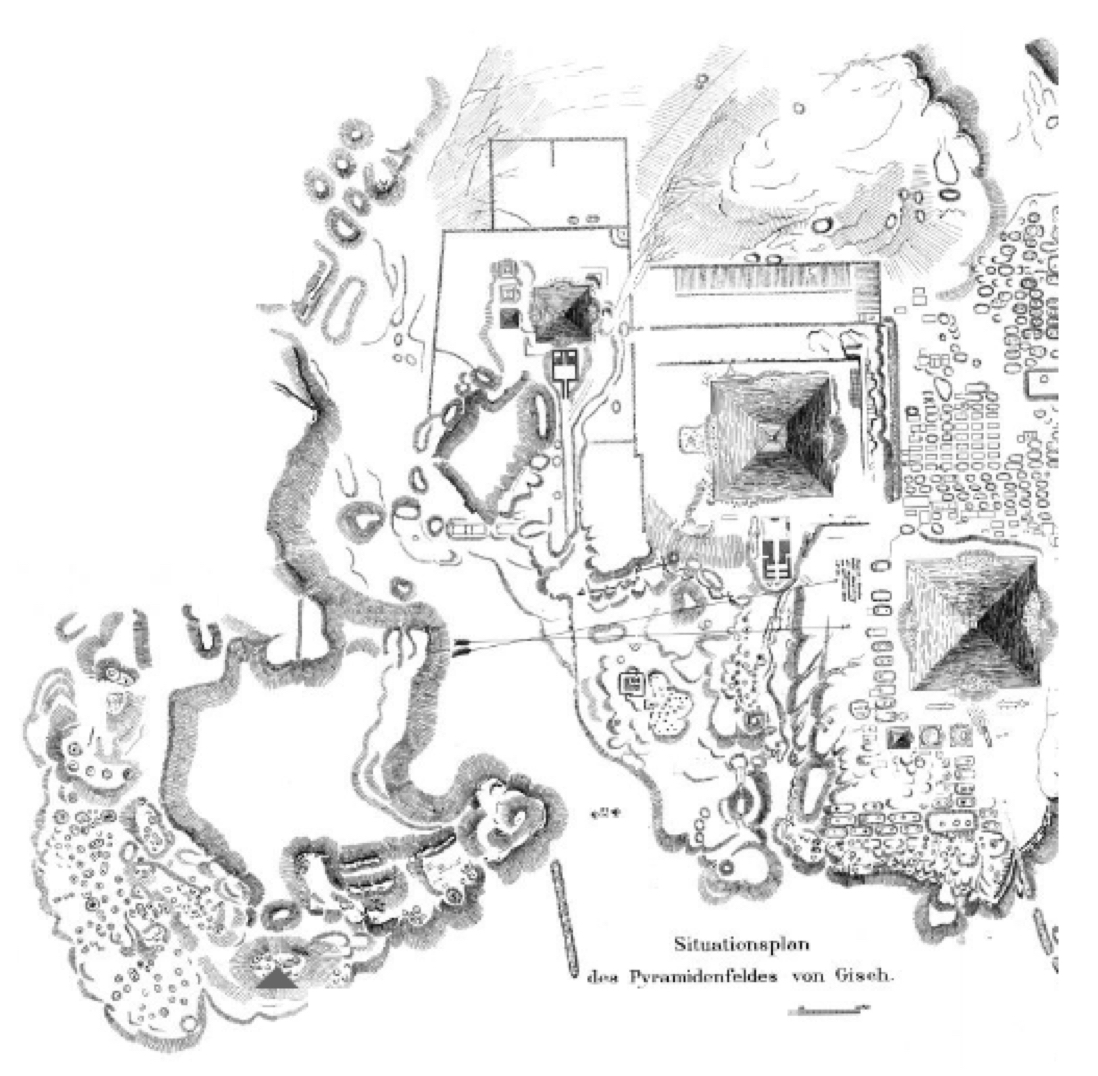:
Diary Transcription:
microfilm: begin page 116
Friday, January 1, 1926 (continued)
(2) Street G 7000 S (continued)
From Avenue G 3 towards east a stone drain runs across Street G 7000 but has been broken up where crossed by crude brick bins. The significant layers of debris were observed at back of G 7130.
[ILLUSTRATION]
crude brick wall
black dust (ashes) 6
mixed debris 5
black floors of crude brick bins 4
white masons debris 3
sand 2
old masons debris 1
The crude brick bins are sunk in the black floor marked above (4), and often descend to rock. In a bin near the west side of the street are a number of pottery vessels in original positions.
(3) G 7011
Among the crude brick walls which adjoin the east face of G I-c and are apparently connected with the Isis Temple, we exposed a burial (A) and a pit.
[ILLUSTRATION]
G 7011 A: was in a masonry box built in a rectangular compartment in the crude brick masonry. The box was roofed with seven slabs of white limestone with the joints filled with white plaster. Inside was a wooden coffin of the Saite type with corner posts. Beside the coffin on west was a decayed box containing small blue ushabtis. At present the relations of burial, crude brick wall and Isis Temple are not clear.
G 7011 B: is a stone-lined square shaft south of Burial A. Filled with mixed debris. Down about 2 meters.
microfilm: end page 116
-
- Classification
- Documentation-Expedition diary pages
-
- Department
- Harvard University-Boston Museum of Fine Arts Expedition
-
- Credit Line
- Harvard University–Boston Museum of Fine Arts Expedition
-
- Display Page Dates
- 01/01/1926
-
- Author
- George Andrew Reisner, American, 1867–1942
-
- Site Name Eastern Cemetery
-
- Site Name Eastern Cemetery
-
- Site Name Khufu Pyramid Complex
-
- Site Name Khufu Pyramid Complex
-
- Site Name Eastern Cemetery
Modern People
-
- Type Author
- Nationality & Dates American, 1867–1942
- Remarks Egyptologist, archaeologist; Referred to as "the doctor" and "mudir" (Arabic for "director") in the excavation records. Nationality and life dates from Who was Who in Egyptology.

